But in Australia, couldn’t this be a passing trend, rather than a fundamental shift in a nation that has always put sport first?
Thursday October 9, 2025

What the Abbie Chatfield case says about DMs, defamation and 'private' social media
Media personality and former Bachelor contestant Abbie Chatfield is being sued for defamation by her former close friend, Heath Kelley, over an Instagram story that accused him of supporting “genocide” and the “slaughter of children” in Gaza.
According to court documents filed in late September, Kelley alleges that Chatfield published private messages between them to her 550,000 Instagram followers on May 7, days after the federal election.
The case has raised questions (and heart rates) in media and influencer circles, with many now asking: how private are your private messages, really?
As the lawsuit between Chatfield and Kelley unfolds, legal expert and partner at Dowson Turco Lawyers, Nicholas Stewart, told Mediaweek it’s a cautionary tale for journalists, public figures, and anyone who uses social media to share heated exchanges.

Chatfield and Kelley in happier times.
Public profile, public post
Chatfield’s Instagram is public, but would she have been safer if it weren’t? Not necessarily, said Stewart.
“A private profile would only limit what we call the grapevine effect, by reducing the ability for the non-following public (and journalists) to view the posts,” he explained.
“But a private profile on Instagram can obviously still have many thousands of followers, and defamation law only requires publication to at least one other person.”
In other words, it’s not about follower count – it’s about publication.
“A plaintiff in defamation proceedings in NSW would also have to show serious harm,” Stewart added, noting that courts look at the size of the audience, the public profile of the person posting, and any reputational or emotional damage caused by the publication.
Can you post someone’s DMs?
That depends on whether the message was sent in confidence.
“Arguably DMs are ordinarily intended to be confidential, but in the times we are in I am not sure that rule always applies,” Stewart said.
“For example, if you messaged your celebrity crush and they shared your DM on their stories or in a reel, would you expect them to have kept the DM secret?”
Still, it’s a legal grey area.
“A breach of confidence or the tort of privacy intrusion might be available to someone who has communicated sensitive information to another and expected that person to keep it confidential,” Stewart explained.
But for a privacy claim to hold up Stewart stipulated that “there has to have been an invasion of privacy by either intrusion or the misuse of information that relates to the plaintiff, the invasion of privacy must be intentional or reckless, the invasion of privacy must be serious; and the public interest in the plaintiff’s privacy would need to outweigh any countervailing public interest (for example, freedom of expression or freedom of the media).”

Legal expert Nicholas Stewart, who is a partner at Dowson Turco Lawyers
When identification is indirect
One question floating around newsrooms: if Chatfield hadn’t named her friend, would she still be in trouble?
“Possibly,” Stewart cautioned. “By not identifying her friend she might have been able to avoid a lawsuit in the first place, although identification in the context of defamation does not need to be explicit.”
Even without a name, a person can still be identified by “other facts about the friend, or what he said or stood for.”
That’s enough for a defamation claim to proceed, and enough to remind public figures that anonymity on social media is rarely watertight.
The privacy pendulum swings
For decades, it was public figures who feared their private lives going public. Now, that dynamic is shifting.
Stewart warned anyone who happens to dip their toe into the media pool (even recreationally) to think carefully about “how we communicate with people we know (and people we don’t know). As lawyers, we are taught early on, don’t put anything in writing you don’t want made public.”
The silver lining? “The good news is there is now a tort of privacy, and there may be some situations where people will be able to sue for serious breaches of their privacy.”
Think before you post (or DM)
The biggest takeaway for anyone in the public eye: caution. This is particularly the case in NSW Stewart said, given we are the “defamation capital of the world”.
For journalists, influencers, and even casual users, the Chatfield case is a timely reminder that “screenshots last forever,” and that what starts as a story to your followers could end as one for the courts.
And, if Taylor Swift has taught us anything, always keep receipts.
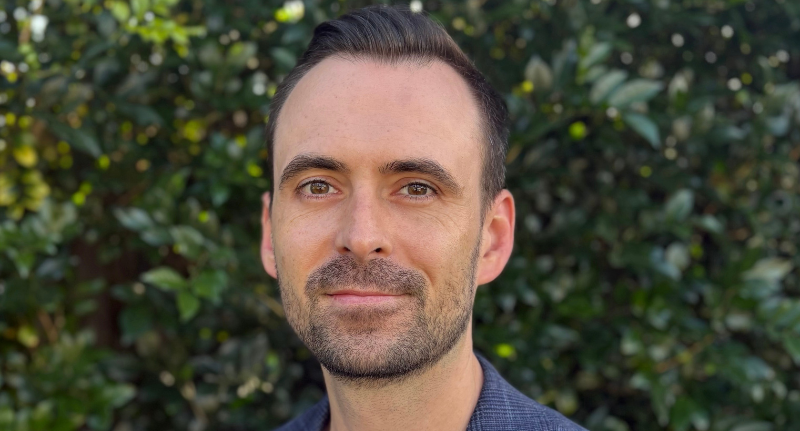
Music overtakes sport as Gen Z’s biggest passion: Vevo’s Tim O’Connor unpacks the new age of fandom
In a country long defined by its love affair with sport, new research from Vevo suggests Australia has undergone a major cultural pivot.
According to the music video network’s Fandom = Cultural Currency report, music has now overtaken sport as the number one passion point for Gen Z Australians, with 50 per cent of 18 to 24-year-olds identifying with music fandoms, compared to just 31 per cent for sport.
“This shift is significant in a stereotypically sports-obsessed nation,” Tim O’Connor, Vevo’s General Manager Sales, APAC told Mediaweek in an exclusive interview. “For Aussie Gen Z, music is more than a soundtrack, it’s how they connect, discover and make sense of culture. And crucially, it’s where brands need to show up.”
O’Connor, who recently stepped into the APAC leadership role after five years at Vevo, said the findings reinforce the network’s mission to help brands connect with music lovers in culturally meaningful ways, and this mark’s the first stage in his new leadership role.
“For me, it’s a natural step,” he said. “I’ve got a great team behind me, and I’m excited to continue growing our APAC expansion.”
“Fandom isn’t just a marketing buzzword anymore,” he said. “It’s the new cultural currency, and the way brands engage with it will define how they stay relevant to the next generation of Australians.”
What’s in the research?
The Vevo report, based on a global survey of 6,000 fans across Australia, the US and UK, reveals that 96 per cent of respondents identify as part of a fandom and nine in ten say fandom plays a defining role in their identity.
“I probably see it as generational and potentially permanent,” said O’Connor. “If you look at broader context around sports participation rates, they’re on the decline nationally. Music has become that more unified cultural connector for youth.”
“No marketer is going to be shocked that more and more content is being consumed online,” he acknowledged. “The rise of ad-supported streaming and BVOD is a huge part of the media mix now for most major Australian advertisers.”
“This audience is digital-native and highly engaged, but you won’t find them in the usual places,” he added. “They simply consume content in very different ways to generations of the past.
Social media effect
“Artists drive trends on TikTok because they’re the ultimate influencers,” he said. “But for those fans that discover music there, we provide that deep-dive experience, the professionally-produced video, the fashion, the style.
“You don’t get that from a UGC-centric platform, so we absolutely see benefits of that as they search for more content.”
“We offer something different from an advertising perspective, and we see platforms like TikTok as totally complementary to the fandom experience.”
“Networks like Vevo are where fans are watching, interacting and forming emotional connections with artists and communities.”
“Vevo’s research found that 69 per cent of global fans are more likely to spend with brands that support their communities, while two in three fans are more likely to remember and engage with ads that appear around their favourite music videos.
“Attention continues to be a hot topic within media, and rightfully so,” said O’Connor. “That ability to recall and remember the ads that appear around your favourite content is increasingly important.
“Two in three fans are more likely to spend money with brands that surround their favourite music videos as well.”
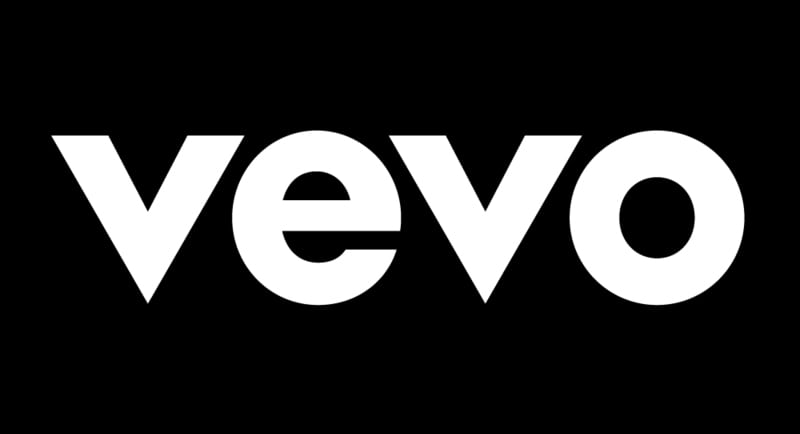
For marketers wary of complexity or cost, O’Connor stressed that effective fandom marketing doesn’t have to be expensive.
“We offer brands access to culturally rich content that resonates with nearly 12 million Australians,” he said. “In our case, we do exclusively sell video pre-roll, and we purposely have a low ad-load because we want to provide a fair-value exchange for our consumers.
“So if you’re a brand or you’re a media planner buyer, and you want to foster an alignment to a major artist or brand, Vevo, can do that in a very effective way.”
O’Connor noted that while sports sponsorships remain powerful, they can be cost-prohibitive. “Music, I think, provides a much lower cost barrier to entry than sport,” he said. “But you’re not compromising on reach.
“Sports sponsorships are incredibly expensive, with elements of exclusivity that can price out advertisers or box them out due to category restrictions,” he said.
“We reach 11.7 4 million Australians a month, so it’s a mass reaching audience. It’s not as if sports in Australia reaches those kind of numbers.”
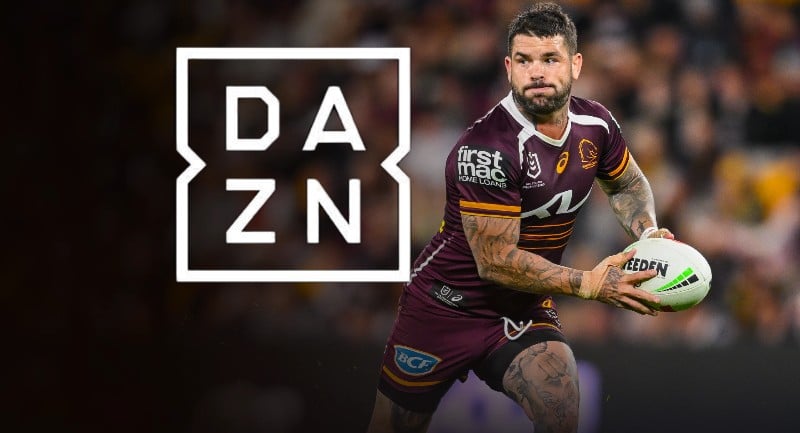
Foxtel owner DAZN charts a path to profitability as it further invests in sports rights deals like the upcoming NRL package
As Foxtel parent company DAZN charts a course toward profitability, it was reported that Billionaire Sir Leonard Blavatnik invested US$587 million (AUS$891) into the sports giant last year.
With Blavatnik’s investment made in the previous financial year, this is not money that will go towards investments like, for example, the upcoming NRL rights that Foxtel will be negotiating for. In April, DAZN took ownership of Foxtel for AUS$3.4 billion, with part of that payment including shares in DAZN.
Blavatnik’s investment is up from an injection of $240 million into DAZN in 2023. The investment was made through his firm Access Industries and there is no expectation that a further investment will be made this year.
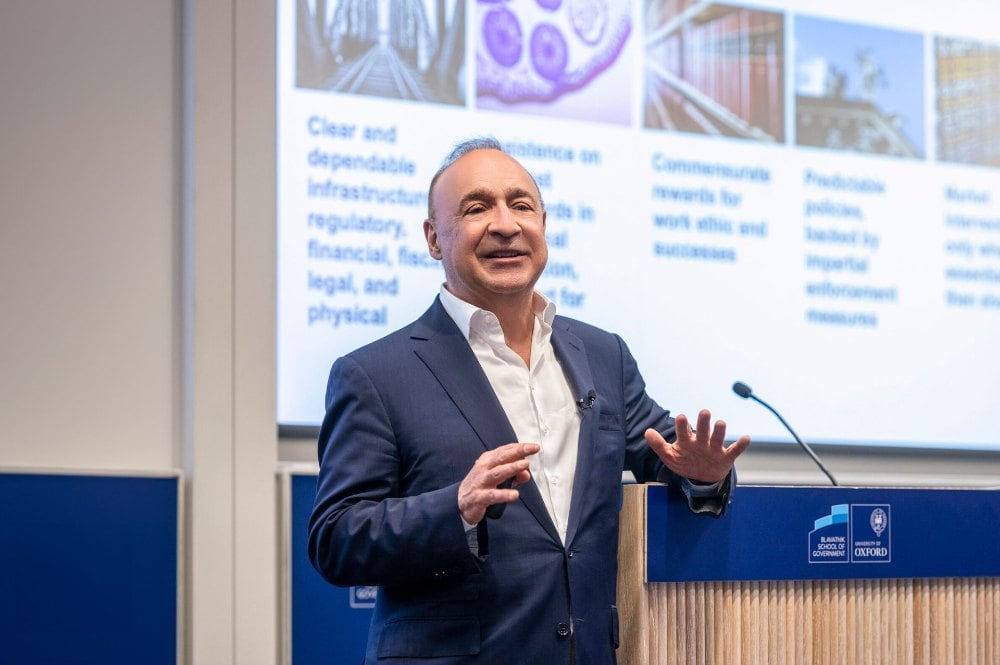
Sir Leonard Blavatnik
Within the past ten years, Blavatnik has invested over US$7 billion (AUS$10.6 billion) into DAZN. Forbes currently has him placed as the 71st richest person on the planet with a net worth of $30.5 billion (AUS$45.54 billion). He made his early fortune with an investment in Russian oil company TNK-BP and today his investment firm Access Industries holds stakes in chemicals firm LyondellBasell, energy conglomerate Calpine, and house flipping website Opendoor.
DAZN’s finances are heading in the right direction. The company reduced its losses last year to $936mn from $1.4bn the year prior. Meanwhile revenue has lifted to $3.2 billion, with the company reporting an increase by $323 million to $3.2 billion last year.
In an interview with the Financial Times, DAZN chief executive Shay Segev said that DAZN is on course to achieve profitability for the first time next year and is considering an IPO in the coming years.
“We’re aiming for at least $5bn in revenues for this year,” Segev told the FT. “The margins are improving, our key markets are already profitable in 2025 and we are comfortable saying that in 2026 the group will be profitable as well.”
International expansion investment
While the continued investment by the high-profile Blavatnik has driven the lionshare of attention around money spent to support DAZN, a recent investment by Saudi sports investment company Surj offers greater expansion potential. It injected US$1 billion into the company, with filings stating that the money will be used for working capital and new investments.
“It’s a global platform, and to accelerate [growth] we probably need to have more capital,” Segev said.
The Surj investment into the company will aid international sporting rights deals like the aforementioned upcoming NRL rights deal in Australia.
In a report by Ampere Analytics in February, the analysts predicted that streaming service sports rights would this year reach US$12.5 billion (which is 20 per cent of the US$64 billion spent globally each year on sports rights).
Of that spend, DAZN was expected to account for one third, with its $1 billion deal for the 2025 FIFA Club World Cup. DAZN has increased investment over the past five years in major European markets like Germany, Italy, Spain, and France.
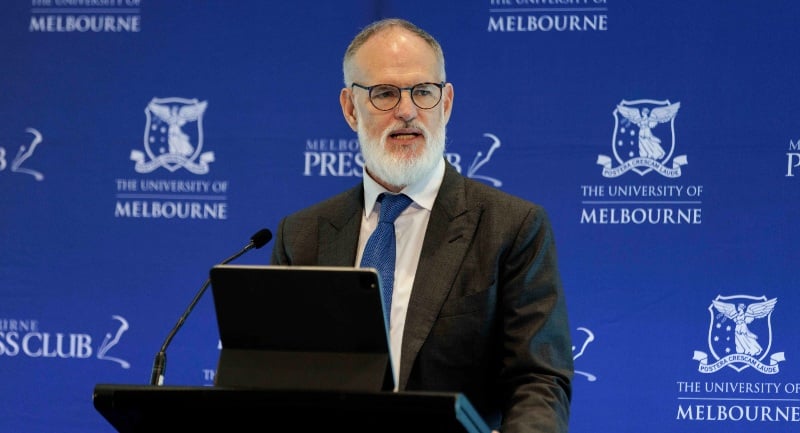
Grand Theft Australia: News Corp Australia’s Michael Miller makes his case to protect the financial interests of Australian media
Michael Miller, the Executive Chairman of News Corp Australia, addressed the Melbourne Press Club today. In his speech, he called on the Federal Government to act now to provide greater protections for Australian media.
The main focus of his attention was on AI LLM scraping of intellectual property. He spoke of the need to force AI companies to be accountable for their copyright violations, making note of News Corp’s efforts to sign partnerships with willing companies like OpenAI, while suing companies that won’t comply like Perplexity AI.
Perplexity is currently facing a lawsuit brought on by the News Corp-owned Dow Jones and the New York Post over the its alleged misuse of their articles to train AI systems. The suit alleges that Perplexity has engaged in large scale unathorised copyright of content, has delivered false attribution on content sourcing, and has failed to engage in licensing discussions. The suit also alleges that the product outputs are designed to compete directly with the original news sources rather than redirecting traffic back to them.
In his speech, Miller said: “The companies shaping this transformation are a mix of established and start ups, and this provides an opportunity to recast relationships and fight for more responsibility. This time, they must be more accountable, they must be more responsible, and they must work with us to ensure mutual benefit, for both the industry and society more broadly.
“The big tech companies that shape our world grew to their extraordinary success by paying no money for inputting others content and accepting no responsibility for their outputs.”
Miller went on to call for the Federal Government to take action on three fronts:
• Deliver on promised support from the News Media Assistance Program (NewsMAP).
• Enact the News Media Bargaining Incentive
• Implement a social license that would serve as a package of laws and requirements that tech companies would need to meet in order to do business locally.
Miller later went on to criticise the Victorian state government on not supporting Australian media, citing a ban in effect on advertising in News Corp mastheads, the AFR, and The Age. He said that this favours the international tech giants, citing a 2021-22 spend of over $75 million on digital and social media advertising.
“t’s not too late to set this straight,” Miller advised. “The coming weeks and months will be critical to get this right.”
You can read the entirety of Miller’s speech to the Melbourne Press Club:
* * * *
Today I want to talk about the price Australians are being asked to pay by the latest tech revolution.
We are, arguably, being asked to surrender…our stories, our voice, our culture, our identity and, ultimately, our Australianess.
This struggle is one all too familiar to those of you here today because you have each gone through it at least once already.
You have lived it, been disrupted and at times overwhelmed by it.
I call it … The Big Steal.
We all lived through the first Big Steal when our ideas, work and creative content was hoovered up by the internet and now there are those who expect us to stand aside and let it happen all over again.
We must not.
Some will disagree with me and say the era that is now unfolding is just structural change or an incremental digital disintermediation – a new normal.
Believe me … It is not.
Make no mistake, we are at the dawn of the next new digital landscape and yet we are being challenged to accept another wave of publicly endorsed theft, and an assault on our privacy, our identities … and our livelihoods.
If it was a video game, it would be called Grand Theft Australia.
But it’s not too late to set this straight. The coming weeks and months will be critical to get this right.
We lived through the first wave of the information revolution with a sense at first … of wonderment and then horror and frustration.
And now as we stand at the dawn of this new technological age. We can’t afford to repeat past mistakes.
AI will create a new digital universe, and this moment provides the opportunity to learn the lessons of the past and design a new relationship between technology and society, that works in ethical and equitable ways.
The companies shaping this transformation are a mix of established and start ups, and this provides an opportunity to recast relationships and fight for more responsibility.
This time, they must be more accountable, they must be more responsible, and they must work with us to ensure mutual benefit, for both the industry and society more broadly.
The big tech companies that shape our world grew to their extraordinary success by paying NO money for inputting others content and accepting NO responsibility for their outputs.
As the AI era unfolds, we have the opportunity to right this imbalance.
In the US, News Corp continues to sign agreements with companies like OpenAI in fair commercial agreements, and at the same time we are taking companies like Perplexity – who is freeriding our content – to court.
News Corp’s Chief executive Robert Thomson describes this process as “to woo and to sue”.
He said in August that “creators of all kinds are conscious of both the responsibility and the opportunity” at this historic inflexion point in the age of AI.
This new era must not enshrine the Wild Wild Web all over again and it is vital that sovereign nations assert their right to decide how this technology plays out in their own societies.
This is an issue that concerns all Australians.
To explore why this new chapter in the information revolution has become an existential issue, and why we in the media and government have to act now it is worth casting an eye back to the past.
Not to dwell on it, but to remind ourselves of it, and to learn from it.
And there is no better place to address this topic than right here in Melbourne.
Because it was here in Melbourne where the earliest digital disruption took hold, the first ripples of the internet’s first wave. Melbourne was, and still is, the global bellwether market. Here, world leading digital businesses were born.
Businesses like REA, Carsales, and Seek were at the forefront worldwide of clicks replacing bricks, and they were established well before similar companies were being founded in the US.
But for news media the impact of those digital disruptors, and the rise of the tech giants that now dominate the internet was profound.
News media’s classified rivers of gold dried up when we willingly gave up our content to be ingested for free, partly due to the promise of global reach, but primarily because there didn’t seem to be any other choice.
The tech revolution’s gold rush – its first Big Steal – was built on the free use of other people’s quality and trusted work – and that should never have been allowed to happen.
And those who believe we should give up our intellectual property to Large Language Models in the same way we gave it up to Search and Social cannot be allowed to take us for fools all over again.
We have seen the impact the Big Steal has had on our industry.
According to the Public Interest Journalism Initiative 161 news outlets – closed their doors in the five years to March last year.
That’s three times more closures than in the decade to 2018.
I would describe every one of those closures as devastating.
Not only at an industry level but at a community level.
Because that’s thousands of local stories no longer being told.
Dozens of local councils no longer being held to account.
Reduced celebrations of local achievements and culture.
We cannot make this mistake again and to its credit, Australia has found resolve to respond to these threats through; political bipartisanship, sound regulators and a vigilant news media.
But new threats keep coming.
In May this year Tim Burrowes wrote that “the Australian media is experiencing unprecedented market failure.” I would agree.
Our industry is buckling under the weight of the four seismic waves of disruption, and you know who will suffer the most? The Australian people.
AI firms are now using bots to scrape all the material that we are publishing online.
A new Big Steal.
Award-winning author Trent Dalton thought so when he discovered his books were being stolen to train AI language models.
Trent said: “These stories I write are absolutely drenched in truth and my own personal history, and the history of the people I love. It’s just a classic definition of stealing”.
However, training their bots to hold conversations requires vast amounts of digital data to create Generative Artificial Intelligence.
To achieve this, some tech giants are seeking access to everyone’s ideas without permission and without payment.
Their justification goes like this: if Australia doesn’t surrender its copyright to the Large Language Models, tech companies won’t build data sheds in Australia.
They say Australia …would serve as an ideal regional hub for Asia-Pacific cloud services due to its proximity to Asian markets.
Their first ask is for complete surrender and their fallback position is a new set of rules written just for them.
Our response must be: NO!
We have a perfectly good set of rules in Australia and it’s time they started playing by them.
An exceptional law with an unexceptional name, The Copyright Act, has helped the Australian voice flourish since it was enacted in 1968.
The Copyright Act – in the most elegant and timeless way – provides basic rights to the copyright holder.
It provides the holder with the right to control, agree to terms, be paid, and enforce breaches to their copyright.
And The Copyright Act is perfectly able to deal with AI companies wanting to negotiate with rights holders.
But members of the Tech Council of Australia have got into government offices claiming they need to change the law in order to attract billions of dollars to establish the data sheds.
But this “claim” is just that.
Without foundation, without evidence.
We saw this in Canberra recently when The Tech Council of Australia’s Chair, Scott Farquhar, told the National Press Club that “fixing” copyright laws was a matter of “urgency” because our laws are “out of sync” internationally.
Changing them, he said, would be the “one thing that could unlock billions of dollars of foreign investment into Australia”. The use of the conditional “could” is telling.
How is it that the tech lobby has put so little effort into quantifying the benefits to back their claim when the cost they are seeking to impose on us is so high and so quantifiable.
How many of these data sheds are they planning to build, and how concrete are the commitments, really?
At last week’s Senate hearing into Australia’s cultural policy, musicians such as Briggs, Jack River and Paul Dempsey, along with authors such as Thomas Kenneally, Anna Funder and Caroline Overington, expressed their alarm at any changes to our copyright laws.
As Keneally forcefully put it: “It is copyright. It’s not copy charity. It’s not copy privilege. It’s not copy indulgence. It’s copyright.”
And our right has been parlayed away by ignorant people who don’t realise what copyright is.”
The Tech Council and some AI companies are pushing for a Text and Data Mining exception known in shorthand as a TDM exception.
What this really means is copyright owners would no longer control access to their works.
The owner of the copyright would not have to be asked whether or not someone else could use their work.
The owner would not be able to decide on what terms their work could be used, or NOT used.
And most disturbingly the copyright owner would not get to decide how much they should be paid for the use of their work.
But the tech advocates have a response to this, they say: “OK, so if you don’t want us to steal your content, then you can opt out.”
Really?
What they really are saying is; “We want Australia’s law to be changed so that we can rob everyone’s house, unless someone puts up a sign asking us nicely if we might skip theirs
please.”
No. They shouldn’t be robbing any houses.
Not to mention, there are some Internet actors who know very well that no publishers can opt out of their crawling, much as they might wish they could.
We shouldn’t be asked to opt out of their proposed Text and Data Mining regime that legitimises theft;
They should instead accept that our existing law includes them and it is time they adhere to our laws.
Australia’s copyright law is fit for purpose.
Our copyright law does not require changing.
Tech and AI companies should not be given a free pass to access content – to avoid paying for it.
I am calling on the Australian Government to once and for all rule out changing Australian copyright law to benefit these companies.
The Government must dismiss proposals for Text and Data Mining regimes – they will destroy the protections provided by Australian copyright law.
Like any other company, these companies must pay market rates for inputs to their businesses.
They must not be given government subsidies.
The Government should also not be seduced into exploring alternative mechanisms that would have similar damaging outcomes that would decimate Australia’s creative industries and silence Australian voices.
We are still in the early days of Generative AI but already, as with past digital disruptions, the news media is again among the first to find itself walking down both sides of the street at once.
Without doubt AI offers extraordinary possibilities to journalism but at the same time it could destroy our industry if it is allowed to hoover up our work and deliver to vast audiences with no attribution and no payment.
As a nation we love new technology – we’re consistently the global front-runners, and Digital Journal last year listed Australian consumers as the most AI addicted in the world.
As a business, news companies must, of course, talk to audiences in the places where they consume information.
And the news media’s role in preserving our democracy is well established, even if it’s not always well understood.
Journalism does not come cheap.
It requires funding.
Funding which is sustainable over the long term.
There is nowhere I’d prefer to be than here – among news industry colleagues – among journalists, editors, authors, business people and lawyers, to talk about a subject that risks
becoming a crisis.
I am calling on the Federal Government to act now.
The social media age ban due to start in little over two months from today deserves to be applauded, but we need to ensure these laws are adhered to.
In addition to the pressing issue of copyright, urgent action is needed on three key fronts.
Firstly, and most importantly, small news publishers have yet to receive any of the promised support from the News Media Assistance Program, also known as NewsMAP.
The government needs to deliver on its commitment after announcing this in December last year.
There is no reason to hold this back.
Secondly, the government must enact now the News Media Bargaining Incentive, which has not advanced, and remains unimplemented just under a year after being announced.
Thirdly, a Social License should be implemented, that would be a package of laws and requirements that the tech companies would need to meet, if they want access to Australian consumers.
The current crisis engulfing Optus provides a telling example.
Optus is, rightly, being held to public account and condemnation over the triple-zero failure that led to people losing their lives.
But where is the same level of accountability being demanded of social media companies whose algorithms torment our children, prey on the elderly and are responsible for the rise in self harm and also loss of life?
My own teenage children are subjected to the graphic images of Charlie Kirk’s assassination on high rotation on social media sites.
We wouldn’t do that.
Our laws don’t allow us to do that.
How can there be one set of rules for a company like Optus while the tech companies refuse our rules?
In my fight for a successful future for professional journalism, I am not asking for handouts. I am calling on the Federal Government to ensure a level playing field for all.
Because journalism is vital to our communities.
The power of journalism was highlighted last month when our campaign – Let Them Be Kids – took to the global stage at the United Nations.
This editorial campaign highlighted the plight of Australian families whose children died after suffering the most vile experiences on social media.
Or consider the work of Nine’s Nick Mackenzie whose coverage of branch stacking and the release of covert recordings led to the sacking of a Labor party powerbroker.
It would be fair to say that while the government has tried, their efforts – at times – are ineffective when it comes to supporting Australian media. Here in Victoria, the state government has banned all print advertising in News Corp mastheads as well as The Age and The AFR.
The ban covers all departments and bodies, including the consumer-facing National Gallery, the Transport Accident Commission and Visit Victoria.
This absurdity denies Victorians important information and unfairly favours the platforms, and at the same time in 2021-22 they spent over $75 million advertising on digital and social media.
I’m also here to call on all in news media to come together to ensure the News Media Bargaining Incentive is implemented now; to come together to support the Copyright Act in its current form; and to back each other on free speech, reminding our organisations of the importance of free markets that need to operate on a level playing field.
What we don’t need, is more restrictions.
What we do need, is to be enabled to do our jobs.
For the role of journalism has never been more important.
News companies are veterans of the digital age.
Yet despite the vast changes – and vast they have been – news media’s north star remains constant.
To represent the communities our audiences live and work in, to document the eddy of events.
To tell the stories that matter, that further the public interest – to improve our communities and the lives of our audiences.
The fact is, there’s never been so much news reporting in this country.
By so many news outlets – across the media landscape, all campaigning on causes that lead to better outcomes for us all.
From News Corp Australia’s mastheads including the Herald Sun, news.com.au and The Australian, I would “call out” the recent Think Again campaign, that is creating greater awareness about the blight of dementia.
It encourages more services and more help for sufferers and their families afflicted by dementia’s persistent challenges.
So great was the interest generated, medical research institute Neura’s web site experienced 100,000 enquiries on their first day, 10 times more than they had ever seen.
Yes, we are all better-than-ever at surfacing all manner of issues important to everyday Australians.
Now we need to be better-than-ever at surfacing the issues important to the survival our industry, and that success will lead to better outcomes for all Australians.
The fact is all news media outlets can recount how their journalists uncovered stories that have helped change our nation for the better.
And the stories we are telling, and the ways we tell them are far greater than ever before.
Story-by-story, professional news media creates a better, more robust, resilient society, celebrating the contest of ideas.
Social media does nothing more than tear and fray the social fabric.
They are the true monster at our gates.
Our content is crucial to their success. It should not be taken or given away for free.
As Joni Mitchell famously sang, “You don’t know what you’ve got ‘til it’s gone.”
Copyright laws protect and promote the essence of what our nation is all about.
It protects the Australian voice.
These laws help make our country better, our democracy better.
Our society is built on the fundamental position that everyone gets a fair go.
This is what copyright helps achieve.
We need to stand up for it, together
The time to do so is right now.
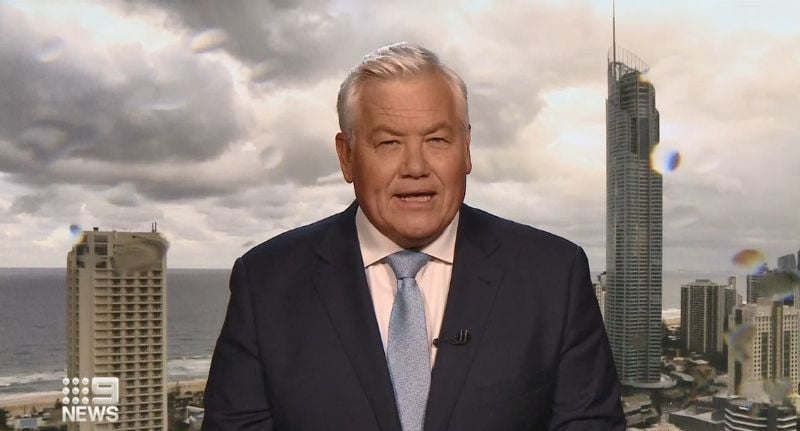
‘Pretty damn negative’: 9News tension rises after viral hot mic moment
Every newsreader’s worst nightmare came true for 9News Melbourne’s Tom Steinfort and Alicia Loxley yesterday – the dreaded hot mic moment.
During Wednesday night’s episode of Tipping Point, host Todd Woodbridge threw to the newsroom for a quick update.
But instead of headlines, viewers were treated to a slice of candid newsroom chatter about Queensland holidays.
Steinfort was heard talking about an upcoming holiday to Queensland, mentioning Paul Taylor, who is the anchor for the Gold Coast News.
The anchor quipped: “I’ll be watching Gold Coast News with Paul Taylor”, in what Taylor himself has described a “negative way”.

Blindsided
Taylor was played the blooper for the very first time live on The Kyle and Jackie O Show Thursday morning, and his surprise was immediate.
After the team aired the clip, co-host Sandilands asked whether Taylor thought Steinford’s tone sounded negative.
“Us news readers, we know nuance and we know the little bits and pieces that go on – that sounds pretty damn negative,” Taylor replied, clearly choosing his words carefully.
Sanidlands laughed: “Don’t take this s**t laying down. I would demand to be a national news reader from tomorrow.”
Steinford and Loxley took over the hosting duties for 9News Melbourne from longtime anchor Peter Hitchener earlier this year, haven’t addressed the incident publicly.
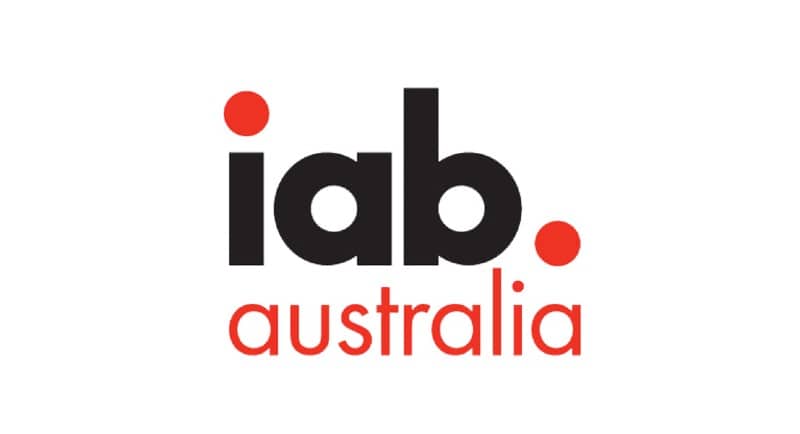
Netflix, Pfizer Australia and Wesfarmers’ One Media join IAB Australia
Netflix, Pfizer Australia, and Wesfarmers’ One Media have joined the Interactive Advertising Bureau (IAB) Australia, as part of the latest cohort of 16 new members from across the media, marketing and adtech sectors.
The new group includes brands, agencies and technology companies that have signed on to support the IAB’s mission to grow sustainable and diverse investment in digital advertising in Australia. Other recent additions include Ebiquity, Mortar AI, ND Agency, Strike Social, TopSort, Vantage, Thorndyke, Gain Theory, Bonfire, Media Merchants, Dynata, Audio Stack and LinkedIn.
All members of the IAB participate through its Councils and Working Groups or as general members. More than 300 industry leaders contribute to these bodies, offering a collective voice to address key challenges facing the digital advertising ecosystem and the marketing community at large.
The Councils’ work spans Australian-specific standards and guidelines, education programs, and the development of key industry resources to help marketers navigate an evolving digital landscape.
CEO of IAB Australia Gai Le Roy said: “Each new member brings a unique perspective to how digital advertising can evolve responsibly and drive growth in Australia. From streaming and retail media to data and measurement, the strength of the IAB community lies in bringing these diverse players together to solve real-world challenges and build smarter, more accountable practices.”
Part of a global network of 45 offices, IAB Australia works to align industry stakeholders on shared solutions, developing local standards and best practices that support the operation and integrity of the digital advertising market. The organisation also helps marketers and agencies understand how digital advertising can drive business outcomes across all platforms.
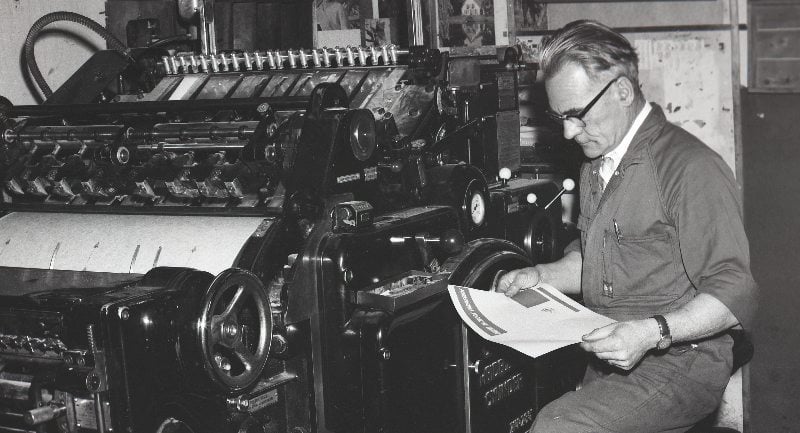
Illawarra Mercury marks 170 years with community-fueled anniversary
The Illawarra Mercury is marking 170 years of continuous publication with a multi-platform anniversary campaign celebrating its legacy and connection to the Illawarra community.
Editor Kathy Sharpe told Mediaweek that while she only joined the paper earlier this year, she has had a life-long interest in it.
“I’ve always loved newspapers and I used to write letters to the editor of my local newspaper when I was a kid,” Sharpe said. “But I remember reading the Illawarra Mercury even at a young age.”
Sharpe grew up in nearby Nowra, which is about an hours-drive away. “A lot of people in Nowra read the Illawarra Mercury because it is an Illawarra South Coast publication. I was really familiar with it. And, of course, during my 30-year career in media, I’ve always read the Illawarra Mercury and seen the different changes, the different styles, different editors.”
The newsroom has, like all newsrooms, changed quite dramatically since the paper launched. These days Sharpe has a team of around 12 that report in to her, but in reviewing all of the archive photos for the anniversary, Sharpe noted just how different things are now.
“It is incredible what our young reporters are doing with an iPhone in their hand in many cases. Tracing the history of the paper since 1855, and looking at old photos of newsrooms… bulging with people using funny old-fashioned computers. You know, of course, there was also a big crew of typesetters typing up all the type and there was people involved in the press, printing staff, huge sales departments…”
The anniversary promotional campaign officially launched today, Wednesday 8 October with a special 24-page Souvenir Edition in both print and digital. The commemorative wrap reflects on the masthead’s rich history of journalism, iconic photography, and storytelling across nearly two centuries.
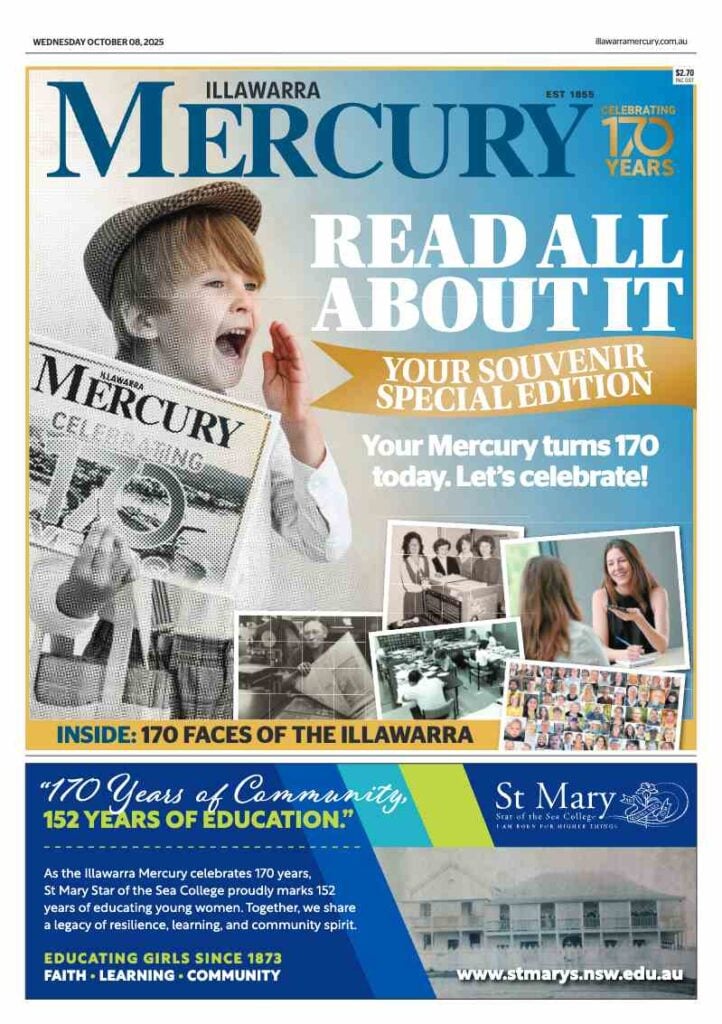
First published in 1855, the Mercury has been a consistent voice for the region, covering everything from the rise of heavy industry to the successes of local sporting teams like the Illawarra Hawks. It has also launched the careers of notable journalists including Bevan Shields, Linton Besser, and Andrew Drummond.
This morning to celebrate the anniversary, they staged a get together where readers could come along.
“We’ve got an event at a newsagents, just to celebrate that side of people who actually sell our paper. Then we’re having an in-staff event in the office, a morning tea this morning. We invited lots of people from the community to contribute video messages. I invited a lot of the musical groups in Wollongong to sing happy birthday to us. Which was responded to with great enthusiasm,” Sharpe noted.

Mr Norm Rangley presses start on a new press in October 1967.jpg
Community and editorial initiatives
Running until 14 December, the 10-week campaign features a mix of editorial features, local events and retail activations:
• Souvenir Anniversary Edition (8 October): Distributed online and in print, supported by in-store celebrations at Corrimal Lotto & Gifts with cupcakes, balloons, Illawarra Hawks juniors and mascot Mercury Max.
• 170 Faces of the Illawarra: An ongoing editorial series celebrating local residents.
• Reader Giveaway (8–22 October): Over $4,000 in prizes available to local readers.
• UOW Student Journalism Competition (27 October): A spotlight on emerging talent from the University of Wollongong.
• Photo Exhibition (3 December): A showcase of Mercury photography at Wollongong Library.
• Sport & CSR Activation (11 December): Sponsorship of the Illawarra Hawks’ Alumni Round at WIN Entertainment Centre.
The paper reports reaching more than 467,000 readers across print, digital, social and event platforms, providing cross-platform advertising solutions for local and national brands.
The anniversary campaign underscores the Mercury’s role in driving community engagement and economic impact across the region.
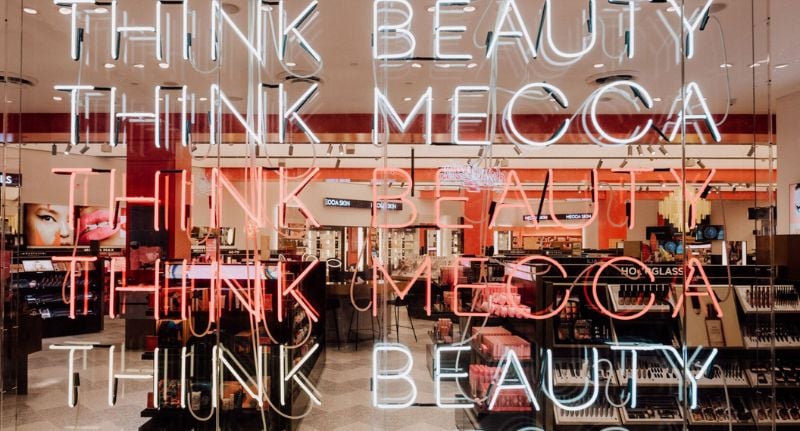
MECCA joins AiMCO as creator-led beauty marketing booms
The Australian Influencer Marketing Council (AiMCO) has welcomed prestige beauty retailer MECCA as its newest member, marking another major move in the rise of the creator-led economy.
It’s a smart bet, at least according to Business Insider, which reports the creator-led economy is now worth more than AUD$387 billion globally and expected to double within five years.
For MECCA, which has spent nearly three decades redefining Australia’s beauty landscape, joining AiMCO signals a deeper commitment to creative partnerships that blend brand love with measurable impact.
Speaking to Mediaweek at ADMA 2025, CMO Kate Blythe said she hoped customers saw how her team go beyond selling product or brand.
“It is about customer connection, experience and inspiration and genuinely having that heart connection with our customers,” she said.
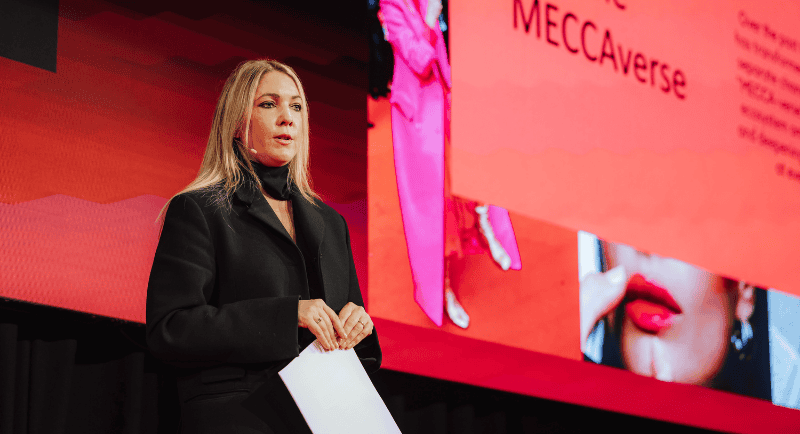
CMO Kate Blythe
From swatches to storytelling
MECCA’s influencer strategy has long been one of the most sophisticated in the local market.
Long before “get ready with me” videos and GRWM (get ready with me) became marketing staples, MECCA was blending authentic storytelling with commerce through trusted creators.
Its approach is multi-tiered: high-impact talent drive major launch buzz, while emerging creators, educators, and cultural voices shape long-term engagement and credibility.
At the heart of that approach sits MECCAWORLD, an advocacy framework that builds lasting partnerships across all tiers of influence.
Programs like MECCA Muses and the Charlotte Tilbury Glow Squad spotlight brand ambassadors, while initiatives such as the NARS Artistry Program and the Beauty Exchange Program nurture professional artists and micro creators alike.
Together, they form a diverse, values-driven community that fuels both cultural and commercial momentum.
“Creators are at the heart of how we tell stories and connect with our community,” said Lucy Asker, Head of PR & Influencer at MECCA. “Being part of AIMCO allows us to continue raising the bar on how we collaborate, measure impact, and lead with purpose in a rapidly evolving media landscape.”
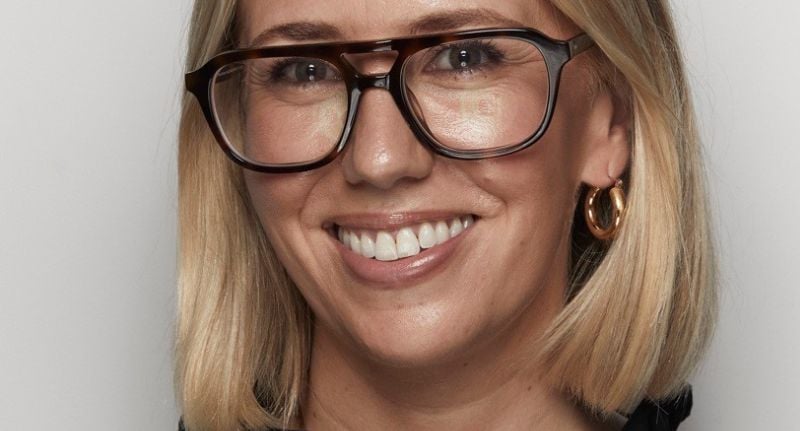
Lucy Asker, Head of PR & Influencer at MECCA
Beauty brands keep leading the pack
For AiMCO, MECCA’s membership underscores how central creators have become to brand storytelling.
Managing director Patrick Whitnall said: “Beauty brands have been at the forefront of influencer marketing in Australia and globally, and MECCA has consistently demonstrated how to connect with audiences in ways that feel authentic and creative. From tutorials to behind-the-scenes storytelling, MECCA has shown a willingness to innovate, experiment, and build meaningful long-term relationships with beauty fans.”
Since its 2019 launch, AiMCO has built a membership base of leading brands, agencies and media companies, and demand for creator marketing insights has only grown.
Earlier this year, the council’s beauty influencer sessions in Sydney and Melbourne sold out, reflecting both the industry’s appetite for better measurement and the power of creators to shape buying behaviour.
Meanwhile, a recent study from Sprout Social found that 61% of consumers place more trust in creator recommendations than in traditional brand advertising.
Founded by Jo Horgan in 1997, MECCA now operates more than 110 stores across Australia and New Zealand, serving over four million customers a year (including this writer) and employing 7,000 people.
And if this partnership plays out like the writing on the wall, those figures will only continue to grow.
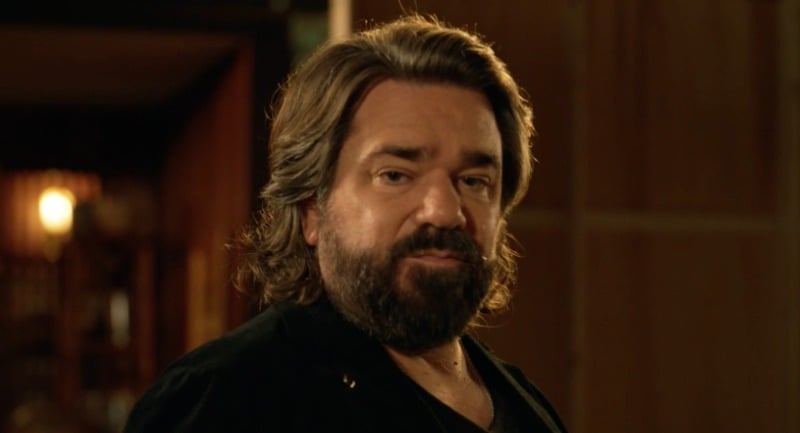
MLC doesn’t care about the future. Hires Toast of London’s Matt Berry to front campaign.
MLC has launched a major rebrand with the platform A Lifetime in the Making, signalling a sharp pivot from conventional superannuation messaging. The campaign, led by UK comedian and actor Matt Berry (Garth Marenghi’s Darkplace, The IT Crowd) and directed by Alex Roberts of Finch, deliberately veers from industry tropes with its opening line: “MLC doesn’t care about the future.”
Developed by newly formed independent creative agency Princess, the campaign repositions MLC as a partner for Australians navigating today’s financial decisions—not just tomorrow’s retirement plans. The platform spans television, cinema, digital, radio, out-of-home and social media, with rollout beginning 5 October 2025.
Rather than showcasing retirees sailing into the sunset, the campaign focuses on real financial choices made in the present. It reflects MLC’s end-to-end offering across superannuation, retirement, investment and financial advice—framed as a journey built day by day.
“This relaunch is about more than a campaign,” said Renee Howie, Chief Customer Experience Officer, MLC. “A Lifetime in the Making captures MLC’s long-term commitment to helping people unlock their potential, every step of the way.”
Founded earlier this year by Beth O’Brien, Cameron Bell, Sam Dickson, and Jonny Berger, Princess brings together creative leads from agencies including Droga5, CHEP, Accenture Song and Clemenger. The MLC brief was one of the agency’s first major engagements.
“A Lifetime in the Making gave us the foundation to be bold and break clichés,” said the Princess founders in a joint statement. “We set out to challenge the category and reframe what retirement can mean for Australians today.”
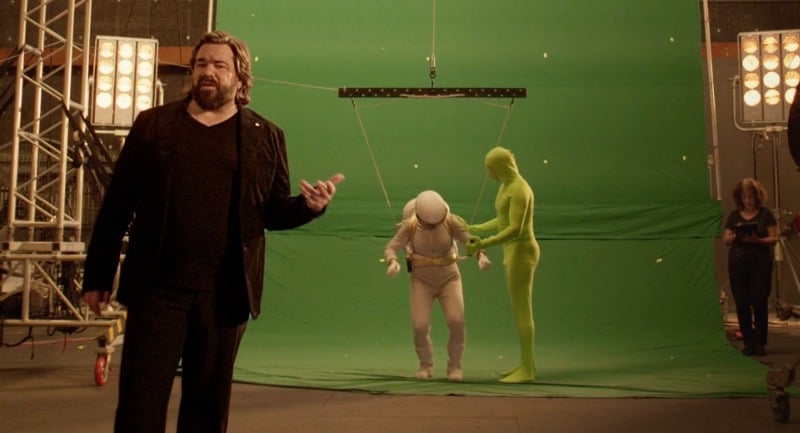
Matt Berry stands before a green screen
Media strategy and amplification was handled by Kaimera. “Princess has built a brilliant platform with huge potential,” the agency said. “Our job is to ensure it gets the attention it deserves through a high-impact media strategy.”
Alongside Berry’s distinctive voice and delivery, the campaign was produced in partnership with Finch, featuring post-production by Blockhead VFX and original music from Sonar Music.
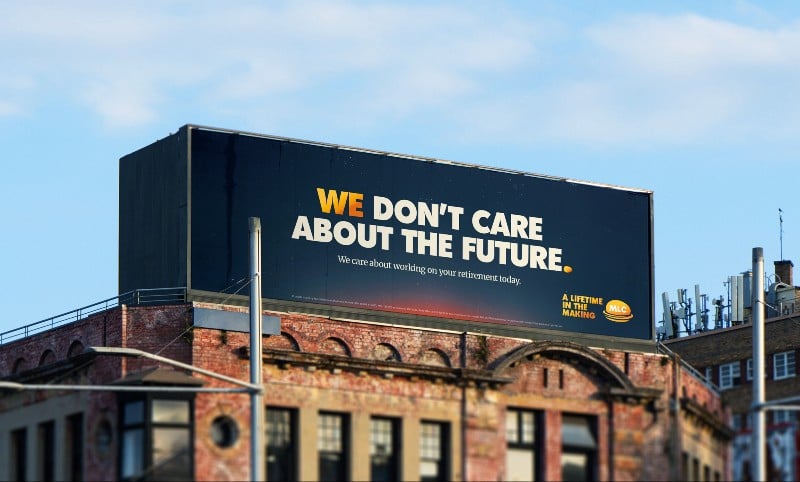
MLC has served Australians for more than 130 years. This relaunch is part of a broader effort to modernise its image and engage a new generation of Australians thinking about wealth beyond retirement.

One chicken's love for a sweet teriyaki sauce is the beating heart of Ogilvy's Sweet Tokyo KFC campaign
KFC Australia has launched its new Sweet Tokyo campaign, a playful and action-packed collaboration between Ogilvy and acclaimed Japanese director Hiroshi Kikuchi. The campaign, live this week, celebrates the brand’s new limited-edition Sweet Tokyo menu range.
Shot on location in Tokyo’s bustling Shinjuku district, the campaign tells a humorous love story between two star-crossed ingredients: KFC’s Hot & Crispy chicken and its Sweet Teriyaki sauce. The concept fuses absurdist comedy with stylised Japanese action, leaning into Australia’s growing fascination with Japanese pop culture.
Campaign executions will appear across TV, VOD, OLV, OOH, social, activations and audio, forming a fully integrated national rollout.
Shaun Branagan, creative director at Ogilvy, said the collaboration with Kikuchi — known for his work with Suntory, Lazada and SoftBank — allowed the brand to create something distinctively Japanese yet recognisably KFC.
“The launch of Sweet Tokyo isn’t just about a new product – it’s a love story around sesame-coated chicken being reunited with an old flame, sweet teriyaki sauce, much to the excitement of the sesame seed kids,” Branagan said.
“The fast-cut result is very typical of Japanese ads, and the kind of all-in approach we know KFC’s fans will love. Almost as much as chicken loves sauce.”
In addition to the film and digital creative, the campaign features an on-ground activation: a world-first KFC vending machine offering free Sweet Tokyo Hot & Crispy in a secret Sydney Inner West location. Fans can follow clues on social media to uncover its whereabouts and claim free product.
Credits:
Ogilvy: Strategy, Creative and Activation
Ogilvy PR: Influencer and Earned
Mr+Positive: Production
Director: Hiroshi Kikuchi
EssenceMediacom: Media
We Are Social: Social
Etcom: Multicultural Communications
AKQA: Digital
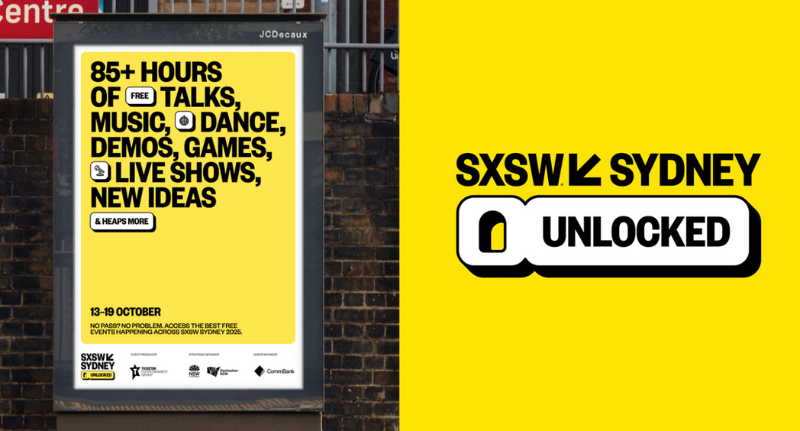
SXSW Sydney unveils 2025 visual identity via Studio 3AM
SXSW Sydney has tapped Studio 3AM once again for its visual identity, with the 2025 edition offering a new offshoot: SXSW Sydney Unlocked.
The branding agency created the festival’s 2024 identity, which has now been expanded into this year’s event and campaign.
The partnership aimed to help scale the event, with the agency last year being tasked with expanding its reach to the whole Asia Pacific region, fostering creativity and innovation on a larger scale.
The 2025 design builds on the established identity, while standing apart through a vibrant, simplified colour palette and graphic system, inspired by tactile tile-like forms that evoke interaction and play.
The visual language aims to be accessible, flexible, and memorable across all touch points, including print and digital media, signage, brochures, and social media advertising.
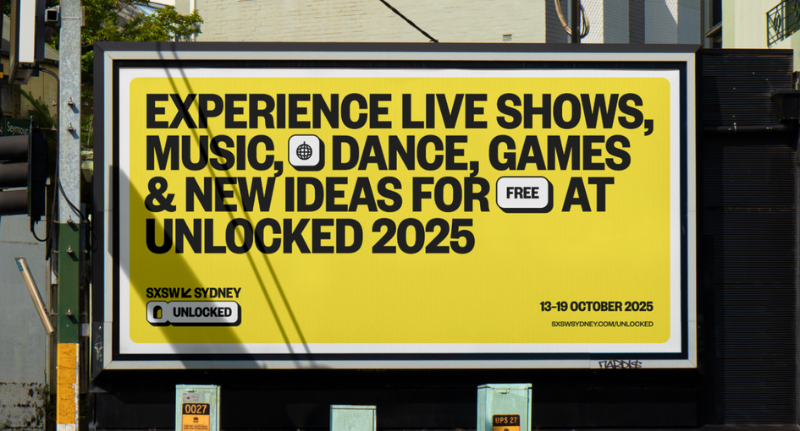
Studio 3AM’s creative director, Jonathan Key, said: “It’s been a pleasure continuing our collaboration with the talented team at SXSW Sydney.
“Together, we’ve developed a new design system that builds on the foundation we created last year while introducing something distinctly new while still familiar, a natural expansion that reflects the festival’s growing and ever-curious audience.”
The design is now live across OOH media, venue and public space signage throughout the city and at the beating heart of the event, Tumbalong Park.
Running from October 13 to19, Tumbalong Park will serve as the central hub of SXSW Sydney with immersive brand activations, tech and gaming demos, live music, and more, all prominently featuring the visual identity.
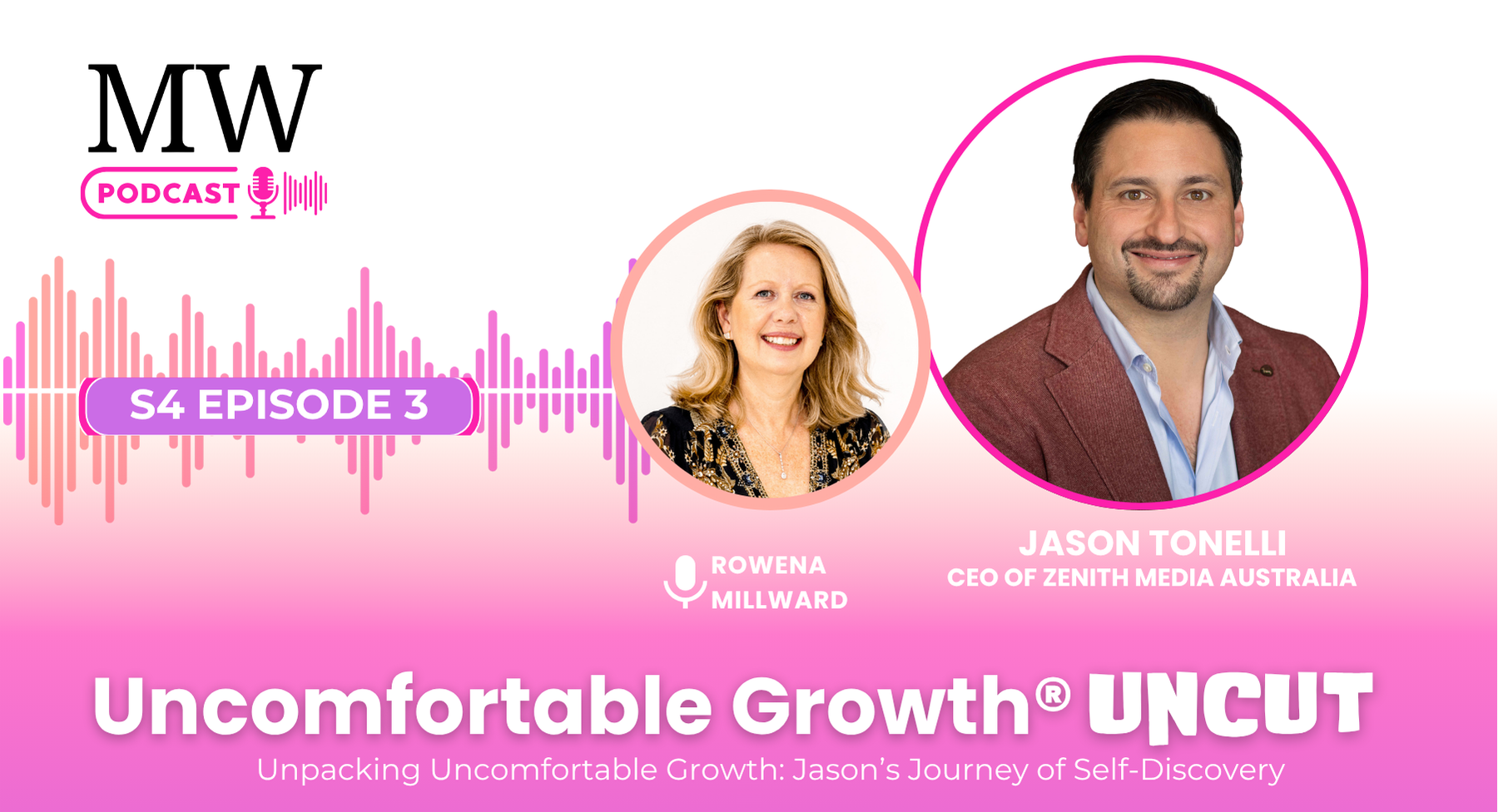
Uncomfortable Growth® Uncut. Season 4, Episode 3 – Jason Tonelli
In this episode of Uncomfortable Growth Uncut, Rowena Millward sits down with Jason Tonelli (JT), CEO of Zenith Media Australia, for a raw conversation about the moments that shaped him, personally and professionally.
Jason opens up about three pivotal experiences in his teenage years: his parents’ sudden separation, struggling at school with undiagnosed ADHD, and a harsh piece of feedback that lit a fire in him to prove himself. These early challenges created a black-and-white worldview that helped him push forward but also made leadership difficult in his early career.
Over time, Jason shares how he learned to embrace the grey, invest in his own development, and shift his craft from media expertise to leadership. From feedback cultures to the importance of surrounding yourself with the right support crew, his story is about turning discomfort into growth and how doing the personal work is the foundation for becoming a better leader.
Ultimately, Jason’s journey is a testament to the idea that personal growth is an ongoing process. He encourages listeners to embrace discomfort as a pathway to growth, reminding us that knowing ourselves is the first step to helping others grow. This episode is a must-listen for anyone interested in leadership, personal development, and the power of feedback in shaping a successful career.
My three favourite quotes from Jason’s story are:
“If you want balance, you’ve got to define what balance looks like in your life and you need to talk to people about it.“
“I relish in getting uncomfortable. I actually chase it and I actually look for it and I look for people who are going to do that for me because that’s how I can get to the next level that I want to get to in leadership.”
“The human experience is something that can’t be taught because it’s yours and personal.”
Tune in now to explore the profound insights shared by Jason and discover how uncomfortable growth can lead to extraordinary leadership.
The world doesn’t need more stories of success; it needs honest conversations about hard challenges, vulnerability, and proof that trials can ultimately become triumphs.
That’s why the Uncomfortable Growth® Uncut podcast was born. It’s a reminder that struggle and success are intrinsically linked, that growth is rarely easy, and that the moments we feel most uncomfortable are where our greatest breakthroughs lie.
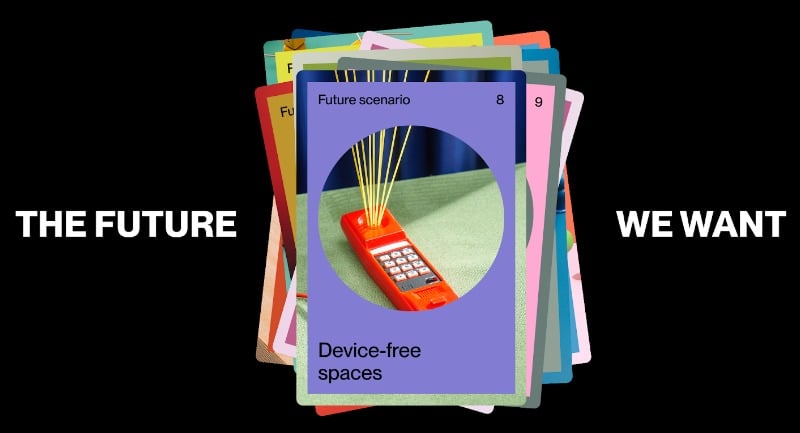
Australians want AI with empathy, not automation for its own sake
Australians and New Zealanders are optimistic about artificial intelligence but want a future where technology serves people, not the other way around. That’s the key finding from insights and research agency TRA’s latest Mood of the Nation report, titled The Future We Want.
The biannual study surveyed 2,000 nationally representative respondents across both countries, in partnership with Dynata, following an initial qualitative phase with students, parents, young adults, professionals, and trend experts. Participants were asked to imagine nine possible future scenarios, from fully automated customer service to hyper-personalised brands and digital twin advisors, to understand how they feel about living and working in an AI-driven world.
Australians are optimistic—but cautious
TRA’s data shows most people are positive about technology’s direction, with 56 per cent of Australians and 60 per cent of New Zealanders reporting positive sentiment. When asked to describe how they feel toward the future of technology, 72 per cent of Australians and 75 per cent of New Zealanders chose “optimistic”.
However, the research uncovered a more complex relationship with AI. While people see its benefits, many expressed unease about losing control—so much so that if given an “off switch”, most would use it. Four key attitudinal groups emerged across both markets:
• 42% optimistic and sceptical
• 25% sceptical and worried
• 21% trusting and hopeful
• 11% trusting and cautious
Colleen Ryan, Partner at TRA, said Australians are “not anti-technology, they’re pro-human”.
“When we asked people to imagine the future, they were honest about their worries, but equally, they saw enormous opportunity,” Ryan said. “People want technology that enhances their lives, not replaces the human connections that make life meaningful.”
Brands must ‘innovate with heart’
The report highlights five ways brands can stay relevant in a technology-led future:
• Earn trust through transparency: Honesty alone isn’t enough—brands must explain why they’re best placed to support decision-making.
• Design for discovery: People value surprise and delight as much as efficiency; AI should help them find the unexpected.
• Put people in the driver’s seat: Technology should empower, not overwhelm—control must be visible and intuitive.
• Celebrate what it means to be human: Recognising individuality builds deeper loyalty than pure automation ever could.
• Build systems that serve all: A future built on inclusivity and social responsibility will earn lasting trust.
Ryan said the findings send a clear message to businesses and brands: “The most successful brands of the future will be those that embrace technology thoughtfully, always with people at the centre. The opportunity for brands in the next decade is to innovate with heart and create experiences that genuinely enrich lives.”
To review the full report, visit theresearchagency.com/future.
Media
ABC grilled over ‘selective reporting’
According to The Australian’s James Madden reports, Marks said he stood behind the ABC’s reporting.
ABC's Lattouf costs revealed
Not that it helped.
As news.com.au’s Jessica Wang writes, Aunty had to pay Lattouf $220,000 in damages.
You can read Marks’ entire opening statement to the committee here.
SBS holds firm on Eurovision 2026
Along with the ABC, the SBS also fronted Senate Estimates, to answer questions about its planned participation in the 2026 Eurovision Song Contest.
It’s contentious, given Israel’s involvement amid the ongoing Gaza conflict.
But as TV Tonight’s David Knox writes, acting managing director Jane Palfreyman said the broadcaster “intends to participate,” adding that impartiality “is a bedrock of who we are and our reason for being.”
Bari Weiss’s CBS move sparks debate
Booth writes that Paramount’s $150 million buyout of Weiss’s outlet The Free Press proves there’s still an appetite for independent, values-driven journalism that doesn’t toe a party line.
DAZN’s billion-pound boost fuels Foxtel’s NRL push
As Kevin Perry reports in TV Blackbox, the cash boost lands as Foxtel looks to lock in both NRL and Formula One renewals – key to Kayo’s continued growth against Stan Sport in the tightening sports streaming race.
AI
OpenAI lands first Aussie government deal
As Cam Wilson writes in Crikey the limited tender, first spotted by Pinery Capital, was handed exclusively to OpenAI, avoiding the $80,000 threshold that triggers public competition.
Legal
Musk settles with former Twitter bosses over payout dispute
The Guardian details the executives accused Musk of fabricating misconduct claims to avoid payment, which he denied.
Radio
Hadley pledges 2GB comeback… on one condition
His comments add weight to reports Singleton is eyeing a Nine Radio takeover.
To Top



